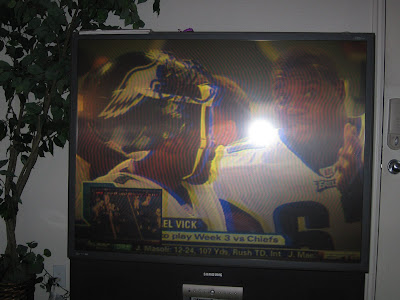As we were getting everything ready the wind kicked up and true to form the canopies started rolling around the backyard. The decision was made to stow the canopies and the reception went on swimmingly without them.
While we were cleaning things up that night someone noticed some white medical tape on my granddad’s hand. When we asked him what happened he explained that when one of the canopies had started rolling across the yard he reached out to stop it and in the scuffle he received a cut on his hand. When we asked to see the extent of the damage my granddad removed the tape and revealed not the small cut that we were expecting to see, but a gaping hole between his middle and ring fingers.
Not wanting to bother anyone with what he considered a minor scratch, my granddad said that he quietly went into the house, poured hydrogen peroxide into his wound, and taped his fingers together. He then continued on and attended the reception and no one suspected a thing.
I would like each of you to put yourself in his situation. Imagine that you are out doing some sort of work, and you look down and see blood oozing out of a gaping hole in your hand. Would you quietly tend to your wound and resume normal activity? Or would you enter into a state of crazed shock and hyperventilate until someone rushed you to the ER? You think my granddad is tough? In the words of Bachman-Turner Overdrive, “You ain’t seen nothin’ yet.”

Dr. Jackson began by examining and cleaning the wound. After he confirmed that stitches were indeed necessary local anesthetic was applied with a small syringe. If anyone has been stuck with a needle of any size anywhere in your hand you know how painful it can be, now imagine not only getting shots in your fingers and hand, but inside a deep gash in your hand. My granddad didn’t even flinch.
After letting the anesthetic set in for a few minutes Dr. Jackson began suturing the wound. The cut was severe enough that he had to tie several stitches inside my granddad’s hand. After the doctor had tied two or three of the stitches he suddenly stopped himself and said, “I’m sorry I forgot to ask Cletus, but can you feel that?”
My granddad looked up at him and with his gruff voice simply said “Yeah.”
For whatever reason the anesthetic hadn’t kicked in yet and the doctor had gone to work tying stitches not knowing that my granddad could still feel everything. Meanwhile, my granddad sat there with no complaints, no grimaces on his face, and no squirming in his seat. Not even a calm “Uh doc, I can still feel that.”
The doctor gave him a few more numbing shots and after making sure that his hand was numb proceeded to tie around fifteen stitches total. I always knew that he possessed many great qualities, but from this moment on I knew for a fact that my granddad is tough as nails.






